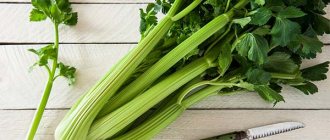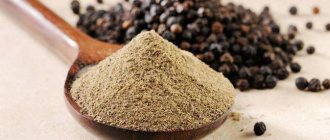In addition to celery, the diet should contain fresh fruits and vegetables, lean fish, meat and poultry, dairy and fermented milk products, grain products, cereals without oil and salt. To drink, drink still water, unsweetened tea, vegetable and fruit juices, compote.
What contributes to the development of gastritis, can you name its cause?
We have already mentioned the benefits of celery for hair, nails and skin. These properties, along with anti-inflammatory and wound-healing properties, led to its use in cosmetology. However, you can just as successfully use celery decoctions at home on your own. Celery is a vegetable, all parts of which are edible. The root, stem and leaves can be eaten raw or cooked. This is a useful plant that contains a whole range of substances necessary for the human body. At the same time, it refers to products with a negative calorie index. These are foods that require more energy to digest than they contain.
Description, plant types
The taste of celery is bitter-sweet, quite unusual and unlike other vegetables, the aroma is quite spicy and strong. Literally until recently, the plant was regarded exclusively as a vegetable crop.
Today it is used as a seasoning. This interesting seasoning vegetable comes in three varieties: leaf, root, petiole.
Root is primarily grown to produce a fleshy, round root vegetable that is shaped like a large apple.
But, its leafy part is also quite suitable for eating. The aroma of the white pulp of the root vegetable is slightly reminiscent of parsley. The root part of the plant, in addition to its vitamin composition and essential oil, contains enzymes that prevent the development of cancer cells.
You can eat the root vegetable either raw or prepare various culinary delights with its addition: salads, first and meat courses, as well as delicious and healthy cutlets, the basis of which will be celery.
For those wondering whether it is possible to eat raw celery, nutritionists unanimously answer: you can and should.
Preparing to cook
The plant adds aromatic notes to dishes, enriches food with fiber and brings beneficial substances to the body. Learning how to properly peel celery is not difficult. It is more important not to spoil its taste.
How to clean the root
The rough skin of the root has no aroma, no nutritional value, and dirt accumulates on its surface. You need to clean it step by step:
- Rinse the root in running water.
- Trim off the top and bottom of the root.
- Cut it into 2-4 parts. After taking the required amount, wrap the remaining parts in cling film or foil and store them in the refrigerator, unpeeled.
- Remove the peel until juicy pulp appears.
- Clean the pulp from dark spots, dry, spongy places, and damage.
- Rinse the peeled root.
After preparation, the tuber is grated or cut into thin slices. It is not cut into cubes or large pieces due to the density of the pulp.
How to clean the stem
Dishes with the addition of celery, the stems of which are juicy and aromatic, acquire a refined taste. To prepare the petioles you need:
- Separate the stems from each other.
- Wash them with warm water.
- Trim the dried parts around the edges and remove any existing fibers and veins from the surface. They are not harmful, but they can taste bitter.
When buying petiole celery, you should choose young stalks. They do not have stiff fibers like older stems. Sometimes just washing them is enough.
How to clean greens
All parts of the celery need to be peeled. Leafy greens are used in sauces, marinades, and salads. The greener the leaves, the stronger the taste and smell of the dish.
Greens are freed from dry, yellow or limp leaves, thoroughly washed and cut.
Raw celery is used to prepare sauces, decorate salads and other dishes. Greens quickly release juice, which makes salads fragrant and rich.
How to eat celery raw
Immediately before eating, the root part is washed well under running water at room temperature. At the same time, using the edge of a well-sharpened knife, remove the skin from the root.
When cutting a vegetable, sprinkle it with a small amount of fresh lemon juice from time to time. This procedure will help avoid darkening of the product.
Fresh lemon juice can be replaced with water with a little salt added.
Description, chemical composition, nutritional value, vitamins and microelements
Celery is a perennial herbaceous plant from the Apiaceae family. There are three cultivated varieties of celery - leaf, stalk and root, each of which has many varieties. The plant prefers moist soils and is resistant to cold. Seedlings tolerate frosts down to -5⁰С, and seeds germinate at a temperature of +3⁰С.
Celery blooms from July to September. Leaves are collected from June to July, seeds - from August to September, roots and stems (petioles) are harvested in the fall.
All parts of celery are useful and edible , so the plant is widely used in cooking, folk medicine, cosmetology, dietary and therapeutic nutrition. The leaves contain 10-18% dry matter, including about 1% sugar, 2-3% protein. The proportion of dry matter in root vegetables is 10-20%, of which 2-4% is sugar, 1-3% is proteins.
Important! Leaves and root vegetables contain beta-carotene (provitamin A), B vitamins (thiamine, riboflavin, niacin, choline, pyridoxine, folate), ascorbic and nicotinic acid. In addition, flavonoids and furanocoumarins were found in the plant.
Celery contains purines, oxalic acid, pectin, essential oils, and organic acids. The mineral complex consists of salts of calcium, potassium, silicon, phosphorus, sodium, magnesium, manganese, copper, chromium, zinc, and other micro- and macroelements. The stems contain more salt, and the roots contain more sugar.
Calorie content, dietary fat and glycemic index
The energy value of fresh celery leaves is 13 kcal, roots - 34 kcal. The obvious advantage of the plant is that with a negative calorie content and low fat content (on average 0.1-0.3 g), the composition contains a lot of carbohydrates (2.1 g) and proteins (0.9 g).
The glycemic index of celery varies between 15-85 units and depends on the part of the plant and the method of cooking .
Fresh leaves have the lowest GI - 15 units. The roots have a GI of 35 units when fresh and 85 units when boiled.
How to eat celery root for weight loss
For those who want to lose weight, nutritionists advise eating a root vegetable once a day, prepared as follows: the washed and peeled root is grated on the finest grater and without delay, before the product begins to darken, mix it with a certain amount of sour milk.
If desired, you can add a small amount of chopped walnuts, a few parsley leaves and a little garlic passed through a chopper to the resulting slurry.
The dish will turn out healthy and tasty, and most importantly, without adding any chemical ingredients.
Additional comments
In addition to basic properties and benefits, petiole celery has a number of interesting features.
- The maximum amount of useful components is contained in the product during the first 7 days after collection. Subsequently, their percentage gradually decreases.
- The stems and leaves are best eaten fresh immediately after chopping.
- To preserve the benefits, steaming for 8-10 minutes is allowed.
- If you break the petiole, you should hear a distinct crunch. Otherwise the vegetable is stale.
- To extend the shelf life in the refrigerator, it is recommended to place the plant in a glass of water.
- Considered a natural antibiotic.
- With regular consumption, the risk of getting colds and infectious problems is reduced.
- It became popular in Russia in the 17th century thanks to Catherine II.
How to eat celery
If you want to use the product boiled or stewed, it is worth remembering the following: the finer it is crushed, the more aromatic the prepared dish will be.
In order to preserve the maximum amount of vitamins during cooking, the vegetable seasoning must be immersed exclusively in boiling water and during cooking, the container must be tightly covered with a lid.
The petiole variety is also called salad. The variety differs from others in its thicker and fleshier stems, the thickness of which reaches 4 cm, as well as the absence of root crops.
Harm or benefit: how many spoons of sugar can you eat a day
A spoon or two in the compote, a handful in the pie, a little more in a mug of tea. What is the danger of uncontrolled consumption of this carbohydrate, nicknamed the “white death”?
Unfortunately, such sweetness can cause serious health problems. Judge for yourself:
Absorbing sugar is hard work for our body. This process leads to calcium deficiency - the useful mineral is simply washed out of the bone tissue. The result of abuse of snow-white sweetness is the development of osteoporosis and the slow destruction of tooth enamel.
What happens to the pieces of refined sugar we eat throughout the day? They are deposited in the liver, turning into glycogen - a complex carbohydrate consisting of interconnected glucose molecules. If the level of this polysaccharide exceeds the permissible norm, the process of forming fat reserves will begin, and our weight will increase by leaps and bounds.
The occurrence of “false” hunger is another consequence of excessive consumption of sweet additives. A sharp increase in insulin and glucose levels in the blood leads to breakdowns and overeating. Goodbye slimness, hello obesity.
The development of diseases of the cardiovascular system, the risk of stroke and heart attack - this is the price to pay for the love of sugar in all its forms. Skip the white sweetener if you don't want to end up at the doctor's office and switch to another supplement - medication.
Getting old before your time - is it possible? Alas, the effect of refined sugar on our body is fraught with similar consequences: it contributes to the accumulation and retention of free radicals in the body, loss of elasticity and firmness of the skin, and the appearance of new wrinkles.
Sugar is a real drug. It is addictive and highly addictive and can be compared to nicotine, morphine and cocaine.
By eating this sweetness in huge quantities, you weaken your immune system - the body’s defenses are reduced. Another danger is the development of diabetes, which can lead to numerous complications - damage to the nerves, kidneys, heart and blood vessels.
Do you still want to know how much sugar you can eat per day without harming your health? They give different numbers - from 30 to 50 g per day or from 9 to 10 teaspoons. However, after getting acquainted with the long list of “side effects” that can develop from taking this sweet supplement, you feel uneasy. Is there really no benefit from this sweetness? Then you should completely exclude this product from your diet and thereby protect yourself by protecting your body from serious and deadly diseases, among which is the main enemy of all those who lose weight - obesity.
It is important to distinguish between the following concepts: natural sugar, which is found in fruits and vegetables, and table sugar - it is this that turns into fat and spoils our precious health. It is enough to avoid the second one or find a useful substitute for it to reduce the burden on the body and reduce the negative impact of a high-calorie supplement
How to eat celery stalks
The stems can be eaten either raw or stewed, for example with meat products or other favorite vegetables. In addition, they can be pickled and salted.
Juicy and soft stems fit perfectly as an additional ingredient into almost any salad. To taste, they will go well with seafood, apples and all the ingredients included in vegetable stew.
In dried form, the product is used mainly as a seasoning. For example, for preparing homemade mayonnaise or various sauces, for adding a special taste and aroma when preparing egg dishes, when preparing any grilled dishes, as well as for creating dry spicy mixtures.
Possible side effects
This feature is especially characteristic of celery seeds. Their extract is used as an antispasmodic and analgesic. Since celery reduces joint pain, it is recommended for people suffering from arthritis, arthrosis and rheumatism. In addition to its medicinal properties, celery helps with migraines. California is considered the largest producer of celery root. This is where the best harvest of juicy and crispy stems is concentrated. Fourth place in the race for the harvest is taken by Michigan, where a celery museum has been created.
Can you eat celery leaves?
For eating the leaves of the plant, a variety called leafy is suitable. Visually, the leaves of this variety resemble parsley leaves, but the celery greens are much more lush, and the aroma is more refined and spicy.
The leafy part can be used salted, fresh, or dried. Spicy greens will add a special tart flavor and exquisite aroma to all kinds of vegetable dishes.
Greens are also placed in containers when salting or pickling any vegetables.
Contraindications
In addition to the beneficial properties of celery leaves, it has its contraindications. People with stomach ulcers and low acidity should not take greens in large quantities. It is also contraindicated in patients with hemochromatosis, in which the level of iron in the body exceeds the norm, and hyperkalemia - an excess of potassium, in which the heart muscle suffers. If you have kidney stones due to the presence of phosphorus in leaf celery, moderation should be used.
The purine contained in celery affects the deposition of uric acid, which is deposited in the joints in the form of salts. Therefore, people with gouty arthritis are not recommended to consume celery leaves. This also applies to those who are severely obese. For these people, it is necessary to eat foods that promote the removal of fluids rather than the accumulation that purine does.
Beneficial features
The benefits of celery can be listed for quite a long time.
The following can be added to the above:
- With regular use, even in small quantities, you can significantly slow down the aging process of the skin and almost all internal organs.
- its unique combination of components (proteins, amino acids, vitamins, minerals) fully provides everything necessary for normal growth and cell division
- Celery tops are often used to eliminate the effects of overwork and nervous disorders.
- stimulation of the secretion of gastric juice can be done using essential oil, which is found in large quantities in the stem and root system of the plant.
For those who are wondering what part of celery can be eaten, the answer is: any.
A diet where the main component is celery is especially suitable for those who suffer from:
- from excess weight,
- allergic rashes and manifestations,
- colds,
- problems with the thyroid gland.
The duration of a diet of this kind can last a maximum of two weeks.
The main dish of her diet is soup, for the preparation of which you will need the following ingredients:
- a good bunch of celery
- cabbage
- 5 medium onions
- 3 small tomatoes
- salad pepper
- spices to taste.
All ingredients are crushed and cut as desired, placed in a container of a suitable size and filled with approximately three liters of water. Place the container on the stove and cook for 15 minutes.
During two diet weeks, soup can be eaten in unlimited quantities. In addition to the main dish, during this period you can eat: fruits, but only in the first half of the day, various vegetables, white boiled chicken or boiled beef.
Dietitians strongly recommend: before going on a diet where the main product is celery, you should definitely visit your doctor and consult with him on this issue.
For those suffering from ulcers, gastritis and other diseases of the gastrointestinal tract, a diet of this kind is strictly contraindicated.
Recipes for aromatic dishes
Celery baked in sour cream is very tasty
. The root needs to be peeled, cut into pieces in the form of “noodles” and boiled until tender in salted water. Then the celery is removed and placed in a greased form. Top the vegetable with sour cream, to which you can add a teaspoon of flour for thickness. For a beautiful crust, everything is sprinkled with grated cheese. The dish is baked in the oven until cooked.
Very light dietary celery soup
suitable even for a romantic evening. Celery root should be grated on a coarse grater or very finely chopped and lightly stewed in vegetable oil. Then you need to add 1-2 tablespoons of flour to it, pour hot water over it all and boil until tender. Mix the yolk with a spoonful of sour cream, beat with finely chopped parsley and dill and, stirring, pour into the hot soup.
is even healthier .
The root should be chopped into thin strips and poured with salted boiling water. After 2-3 minutes, the water can be drained. While the celery is cooling, chop the onions, carrots, and apples. The salad should be salted to taste and seasoned with sour cream. It is appropriate to add a boiled egg.
Traditional healers believe that celery provides a great service to men. It is not for nothing that Pushkin is credited with the lines “To make a husband dearer to his wife, give him celery...”
Pear soup with cheese
Main ingredients:
- celery root – 700 g;
- pears - 2 fruits;
- butter – 50 g;
- garlic – 1 clove;
- onion – 1 head;
- cheese (mozzarella) – 150 g;
- spices to taste.
Cooking sequence:
- Add a portion of oil to a preheated frying pan, then add chopped onions, garlic and spices. This whole mass is fried well.
- Then diced pears and celery are laid out in a frying pan.
- After five minutes, add water so that the entire mixture of vegetables and pears is completely covered. Cook for 20 minutes over low heat.
- Then you need to remove the workpiece from the stove and let it cool, then beat it with a mixer. You should get a puree, to which you can add grated cheese.
- The puree soup is put back on the stove and brought to a boil.
- Before the end of cooking, you can also add spices to achieve the desired taste.
Roasted celery root
Fried celery root is ideal for meat and fish dishes. Cooking time 25 minutes.
Ingredients:
- root vegetable - 1 pc.;
- carrots – 1 pc.;
- leek – 1/3 part;
- dill and cilantro - a small bunch each;
- lemon – ½;
- oil - for frying;
- spices - to taste.
Cooking method:
- Vegetables are peeled and the pulp is cut into slices. To prevent it from darkening, sprinkle it with lemon juice.
- Pour oil into a heated frying pan and fry the celery until golden brown.
- Reduce the heat and, with the lid closed, simmer the vegetable until soft.
- Next, diced onions, carrots, herbs and spices are added to the root vegetable.
- With constant stirring, the vegetables are brought to readiness.
Celery soup
Ingredients:
- cabbage – 1 pc.;
- root vegetable – 200 g;
- onions – 6 pcs.;
- sweet pepper – 2 pcs.;
- tomatoes – 6 pcs.;
- green beans;
- tomato juice – 1.5 l;
- spices - to taste.
Cooking method:
- Vegetables are peeled, cut into small strips and poured with tomato juice so that it covers all the products. If this does not happen, add boiled water to the pan.
- Place the pan on the stove and bring to a boil.
- As soon as the soup boils, cover it with a lid and remove from the stove.
- After 10 minutes, after infusion, the dish is ready to eat. Herbs and spices are added to it to taste.
Celery and pineapple salad - recipe with photos, very tasty
The appetizer will delight you with an unexpected combination of flavors. It can be served on the holiday table. Guests will not be disappointed!
For 2 hearty servings you will need:
- Celery stalks – 3 pieces.
- Fresh or canned pineapple (one can or half a whole medium-sized fruit). Use canned food only if fresh fruit is not available! The difference in taste is significant.
- Green apple – 1 pc. Choose a medium size that is not too soft.
- A quarter cup of pecans. If not, substitute walnuts or cashews. I like the last option, but today I bought nuts unsuccessfully. I had to make do with what I had
- Low-fat yogurt without additives. No mayonnaise! At 100polezno.ru we discuss only what is really useful!
Procedure:
- Cut off the petioles.
- Separate the top part with the leaves.
- Wash thoroughly in running water, dry with a napkin.
- If the celery is very young, then you don’t need to do anything. If the stems are covered with a tough film, carefully remove it. Use a short knife or vegetable peeler.
- Cut crosswise into small pieces about 0.5 cm thick.
- Add yogurt and diced pineapple.
- Add some salt.
- Stir.
- Top with nuts or sesame seeds.
By the way, you can cut the stems into 10-12 cm pieces and serve with sauce. I loved dipping them in hummus or peanut butter. Original, and most importantly – not troublesome.
Celery in batter
The delicate batter makes the celery soft and juicy.
Ingredients:
- celery root – 1 pc.;
- flour – 100 g;
- eggs – 2-4 pcs.;
- cream – 100 ml;
- pepper, salt - to taste;
- oil - for deep frying.
Cooking method:
- Celery is cut into medium-thick slices.
- Flour is mixed with cream, eggs and spices are added.
- If the batter turns out liquid, then add flour.
- Each circle is dipped in batter and deep-fried until golden brown.
The finished dish is sprinkled with herbs.
Freezing
Petiole and leaf celery in the freezer retains its beneficial properties for 6-10 months.
You can use several methods for freezing:
- Entirely. Wash the workpieces with running water and dry at room temperature on a cotton or paper towel. Wrap in cling film or place in airtight containers.
- After cutting. When harvesting leaf celery, the top part is separated from the shoots, chopped and frozen in portions. You can store the stems in the same way. Another option is to distribute into ice cube trays and fill with water. When it freezes, place ice cubes in containers or cling film. Petiole varieties can be ground to a puree before freezing.
To store the roots in the freezer, cut them into strips or cubes and then blanch them for 5-10 minutes in boiling water. Cool, dry, lay out portions and put into a quick freezing chamber.
What's the benefit?
There is an opinion that this wonderful green vegetable can solve many health problems. And the benefits of it in this case are as follows:
- Celery petioles help cope with diseases of the urinary tract and digestive system. All thanks to its diuretic properties. In this case, along with excess fluid, harmful substances also leave the body.
- I already said that it contains magnesium and iron. That is why this plant can slow down cancer processes in the human body.
- It can, or even should, be consumed by diabetics to lower blood sugar levels
- Celery boasts the ability to lower blood pressure
- It will be useful if you want to put your nervous system in order: make it more resistant to stress and various kinds of tension, improve memory and concentration.
- Do you know how many calories are in 100 grams of celery? Only 18. For weight loss, this amazing vegetable will be simply irreplaceable
- It contains a lot of vitamin C. This means that this miracle product will strengthen the immune system and improve the general condition of the body. But this is subject to its regular use.
- Men should also include this product in their diet, as it has a positive effect on libido and potency. By the way, many claim that celery is a fairly powerful aphrodisiac.
- This unusual greenery will improve the condition of your skin, normalize your vision, and in general will help you always be in good shape.











